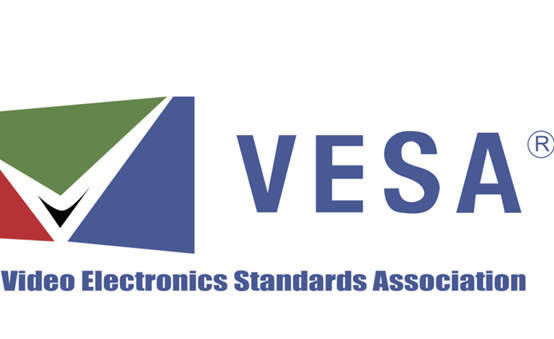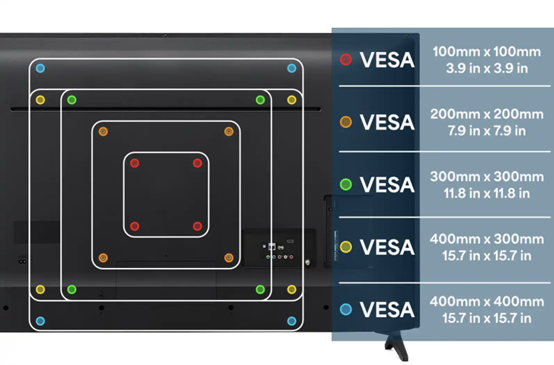The VESA (Video Electronics Standards Association) mount standard is a universal standard for mounting flat-screen TVs, monitors, and other display devices. It defines the dimensions and specifications of the mounting interface, ensuring compatibility between different brands and models. Understanding VESA mount standards is crucial for anyone looking to mount their display devices securely and efficiently.

What are the VESA Standard Classifications?
The VESA Standard classifications are MIS-B, MIS-C, MIS-D, MIS-E, and MIS-F. The most common of these standards are MIS-D, MIS-E, and MIS-F.
VESA MIS-D is a standard typically used for monitors and smaller TVs, featuring mounting hole patterns of 75×75 mm or 100×100 mm. It accommodates weights up to 14 kg and adheres to the Flat Display Mounting Interface (FDMI) guidelines. This standard is widely employed in desktop monitor mounts, wall mounts, and multi-monitor setups, ensuring compatibility across various brands and models. It is popular in home and office environments for its versatility and ease of use in securely mounting displays.
VESA MIS-E (200×100 mm) is a standard specifically designed for larger monitors and some TVs, featuring a mounting hole pattern of 200×100 mm. It supports heavier weights, typically up to 30 kg, and adheres to the Flat Display Mounting Interface (FDMI) standards, ensuring compatibility across various mounting solutions. This standard is commonly used in professional settings like offices, conference rooms, and digital signage installations, where robust mounting solutions are necessary for securely positioning larger and heavier displays. It offers versatile mounting options such as wall mounts, desk mounts, and ceiling mounts, catering to diverse installation requirements.
VESA MIS-F (200×200 mm) is specifically designed for larger displays such as mid-sized TVs and monitors, featuring a mounting hole pattern of 200×200 mm. It supports heavier weights, often up to 50 kg or more, and adheres to the Flat Display Mounting Interface (FDMI) standards for universal compatibility. This standard is ideal for applications requiring robust mounting solutions, including home entertainment setups, boardrooms, and public displays. It offers a range of mounting options such as wall mounts, floor stands, and articulating arms, ensuring versatile installation in diverse environments. VESA MIS-F facilitates easy integration and setup of displays across different brands and models, making it a popular choice for secure and flexible display mounting solutions.

How do I find the VESA size of my TV?
Typically, your television’s user manual or the manufacturer’s website will include this information. If not, you can easily find the VESA size on your own by doing the following:
- Horizontal Measurement: Measure the distance between the centers of the left and right holes.
- Vertical Measurement: Measure the distance between the centers of the top and bottom holes.
- Ensure you’re measuring from the center of one hole to the center of the other.
- Convert to Millimeters: If you measured in inches, convert the measurements to millimeters (1 inch = 25.4 mm).
VESA specifications are displayed in millimeters and are read as the horizontal measurement followed by the vertical measurement. For example, if the distance between your TV’s mounting holes is 400mm horizontally and 200mm vertically, your VESA size will be shown as 400×200.

